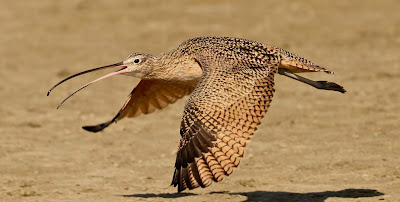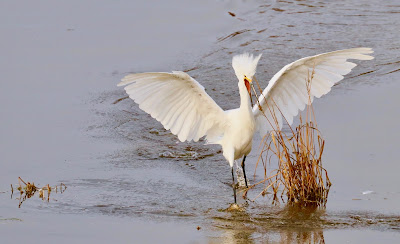Driving down the northern coast of California is an amazing adventure. We slowly drove the 32 mile Avenue of the Giants. These beautiful Coastal Redwoods stretch into the sky at over 350 feet tall. This is where our RV roof window really comes in handy.
Wherever we stopped, there was beauty and birds and wildlife to observe. We stayed at several parks along the route.
 |
| Black-tailed Buck |
 |
| Red-shouldered Hawk |
 |
| Westport Beach |
 |
| American Dipper |
We spent a full day exploring Point Reyes north of San Fransisco. This area is large and has a variety of habitats, sand dunes, meadows, seashore, and historical working farms.
 |
| Tule Elk |
 |
| Great Horned Owl |
 |
| Barn Owl snoozing |
 |
| Coyote ready to pounce |
 |
| Cooper's Hawk |
Historicaly, this area was explored by Sir Francis Drake and the bay, beach, lagoon, lighthouse, and road are all named in his honor. Long-billed Curlews roam the beach where it is thought he landed.
 |
Two herds of Tule Elk are established in the highlands of Point Reyes.
Ravens find a soft landing and this bull elk just ignors them |
 |
| Tricolored Blackbirds love the farm yards by the cattle |
 |
| Due to steel shortage actually made out of cement |
We then drove very early to cross the Golden Gate Bridge before the traffic became a hazard. We arrived at Seacliff State Beach at around 7am and this is the unusual sight in the water at the end of the pier. Full of Brown Pelicans, Brandt and Double-crested Cormorants and numerous gulls is the Palo Alto, a World War I concrete ship which was never used in the war. It was towed here as an amusement ship with restaurant and dance hall for many years until the storms and waves destroyed it.
 |
| Golden-crowned Sparrow |
 |
| Bewick's Wren |
 |
| Bottlenose Dolphins near the pier |
 |
| Oak Titmouse |
 |
| Brown Creeper |
 |
| Cow-nosed Ray was caught by fisherman at Seacliff, they released it backed to the sea |
 |
| California Scrub Jay |
 |
| Band-tailed Pigeons |
 |
| California Towhee |
After four days at Seacliff, we headed inland to stay at Oakhurst near Yosemite National Park for three nights. We met up with friends from Texas, Gene & Janice that we also saw at Yellowstone, and Mt. Rainier. Great times sharing birds and all the great scenery. We appreciated their driving into the park because it's more difficult in an RV.
 |
| Lewis's Woodpecker |
 |
| Western Bluebird |
 |
| Very dark morph of Red-tailed Hawk |
 |
| Grizzly Sequoia Tree at Mariposa Grove at Yosemite |
 |
| Red-breasted Sapsucker |
 |
| Williamson's Sapsucker |
 |
| Acorn Woodpecker hides more acorns, "Do I need more holes?" |
 |
| Female Phainopepla |
 |
| California Quail |
 |
| Beaver were our entertainment right behind our campsite |
 |
| El Capitan at Yosemite, 3,000 feet straight up from the valley, summit 7,569 feet. |
 |
| Smoke hangs in the air over Yosemite National Park |
 |
| Steller's Jay finds an acorn |
We then took the four hour drive to King's Canyon & Sequoia National Park staying at the Azalea Campground for three days. Our favorite bird here at the site was the White-headed Woodpecker, so nice to see everyday.
We spent one day starting at the General Grant Grove and the second largest tree in the world. We then drove down, down, down into King's Canyon, with it's amazing rocks, and falls and river tumbling through the canyon that you really need to see in person. It was sad to see how dry the hillsides are, and it doesn't surprise us how easily fires can start and spread.
 |
| Mountain Chickadee |
 |
| Tree climbing Black-tailed Deer looking for some tasty leaves |
The center tree is the largest tree in the world, the General Serman Sequoia is 311 feet tall, could be up to 3,200 years old (how amazing is this), it may weigh 2.7 million pounds, bark is 31 inches thick, and base is 40 feet in diameter.
We are now heading back to the ocean and staying the next week at Morro Bay.
Love & Prayers,
Ty & Ida Baumann

















































































